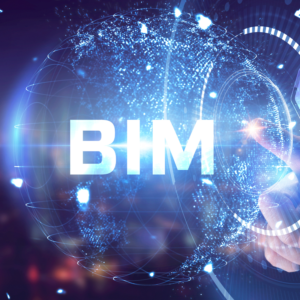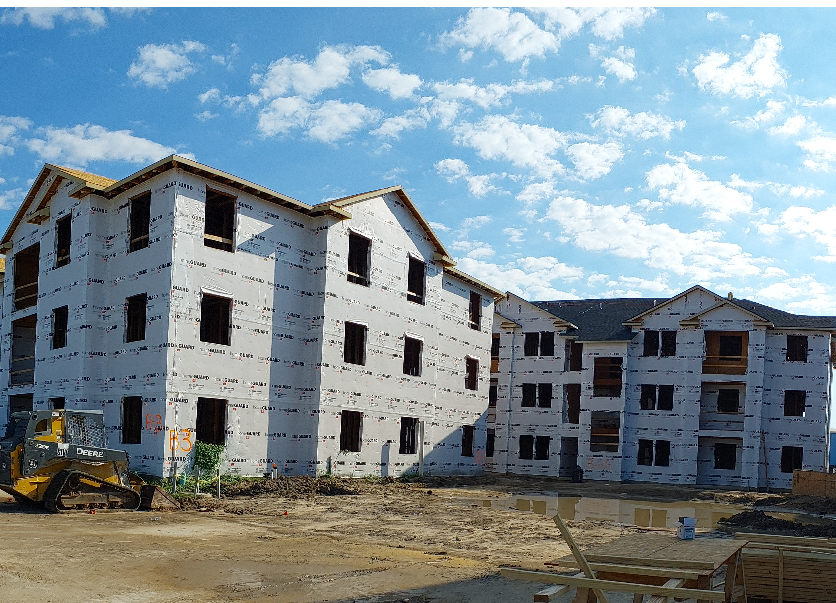The integration of multidisciplinary collaboration platforms within the design-build industry marks a significant shift towards a more unified and streamlined project delivery approach. By bringing together diverse disciplines under one digital roof, these platforms facilitate real-time communication, data sharing, and project management across the architecture, engineering, and construction sectors. This synergy not only enhances the efficiency of the design process but also improves decision-making, reduces errors, and ensures a higher quality of the final product. As these platforms continue to evolve, they promise to further transform the AEC industry by enabling more sustainable and innovative design solutions.
One such innovation is the OpenBIM-enabled collaborative design platform, which has been instrumental in streamlining design processes and facilitating effective communication across different disciplines. A study published in MDPI’s Buildings journal highlights a dual-level framework for OpenBIM that significantly enhanced the design process of an airport project in Chengdu, China, resulting in a 27% faster completion rate and a 98% reduction in design errors.
 Moreover, the integration of Building Information Modeling (BIM) into these platforms has been a game-changer. BIM models serve as consolidated digital data repositories that enable seamless information exchange between stakeholders throughout a project’s lifecycle. This approach not only improves coordination but also optimizes resource allocation and maintains project timelines and budgets.
Moreover, the integration of Building Information Modeling (BIM) into these platforms has been a game-changer. BIM models serve as consolidated digital data repositories that enable seamless information exchange between stakeholders throughout a project’s lifecycle. This approach not only improves coordination but also optimizes resource allocation and maintains project timelines and budgets.
The Internet-based collaborative design environment, leveraging on Client-Server and Peer-to-Peer (P2P) network models, allows real-time synchronous collaboration and integration of discipline-specific designs into a single BIM model. This method addresses the challenge of conflicting design parameters among different disciplines, which traditionally consumed a significant amount of time and resources to resolve.
The benefits of employing such multidisciplinary platforms are evident in case studies like the airport project in Chengdu, China. The application of a dual-level OpenBIM-enabled collaborative design framework resulted in a 27% faster completion rate, a 98% reduction in design errors, and heightened user satisfaction. These platforms not only optimize resource allocation and project timelines but also ensure that each component functions cohesively within the larger design framework.
Design-build collaboration technology significantly streamlines workflow by integrating various project phases, from conception to completion. This approach brings together all stakeholders under a single contract, fostering a collaborative environment that can lead to enhanced communication, increased efficiency, and reduced project timelines. Here’s how design-build collaboration technology can streamline workflows:
- Enhanced Communication: By using a centralized platform, team members can share information in real-time, reducing the likelihood of miscommunication and ensuring that everyone is on the same page.
- Increased Efficiency: Integrated workflows allow for simultaneous design and construction activities, which can shorten project timelines and reduce costs associated with delays.
- Risk Mitigation: A unified approach helps in identifying potential issues early in the project, allowing for proactive measures to be taken to mitigate risks.
- Improved Quality Control: With all parties working closely together, there is a greater focus on quality at every stage of the project, leading to better outcomes.
- Reduced Rework: As design and construction teams collaborate more closely, the need for rework due to design errors or miscommunication is significantly reduced.
- Streamlined Decision-Making: Decision-making processes are more efficient as all relevant parties are involved and informed, leading to quicker resolutions and progress.
- Cost Savings: By reducing delays, rework, and improving efficiency, design-build collaboration technology can lead to substantial cost savings over the course of a project.
- Transparency and Accountability: A shared platform ensures transparency, with each team member accountable for their part of the project, fostering a sense of ownership and responsibility.
- Flexibility and Adaptability: The collaborative nature of design-build allows for more flexibility and adaptability to changes, which is crucial in managing the dynamic nature of construction projects.
- Data-Driven Decisions: Access to real-time data and analytics helps in making informed decisions that can positively impact the project timeline and budget.
Design-build collaboration technology significantly enhances communication across various disciplines by streamlining the integration and management of information. This is achieved through several key mechanisms:
- Centralized Information Repository: Technologies like Building Information Modeling (BIM) serve as a central hub for project data, integrating inputs from different disciplines such as architecture, engineering, and construction. This centralization facilitates easy access to information and ensures that all stakeholders are working with the most current data.
- Improved Coordination: By providing a shared platform, design-build collaboration tools enable seamless interaction between team members. This helps in synchronizing efforts and reducing the likelihood of errors or miscommunications that can occur when disciplines work in isolation.
- Visualization and Clarity*: Collaborative technologies often include visualization tools that help in creating a shared understanding of the project. For instance, a 3D model can provide a clear picture of the design intent, allowing for better alignment between the construction process and the original requirements.
- Efficiency and Error Reduction: The integration of different disciplines through collaboration technology can lead to a more efficient design process. As noted in a case study, the application of an OpenBIM-enabled collaborative design framework resulted in a 27% faster completion rate and a 98% reduction in design errors.
- Enhanced Communication: These technologies foster a culture of open communication, where feedback and discussions are encouraged. This can lead to innovative solutions and a more cohesive team environment.
- Cross-Disciplinary Education: Design-build collaboration tools also have educational benefits. They can be used to teach students from different disciplines the value of teamwork and the importance of understanding each other’s roles in a project setting.
 In conclusion, design-build multidisciplinary collaboration platforms offer a transformative approach to project development, integrating diverse expertise and streamlining project workflows. The benefits of such platforms are manifold, including enhanced communication, increased efficiency, and the fostering of innovation through collective expertise. By bringing together various professionals, these platforms facilitate a more holistic approach to design and construction, leading to more cohesive and sustainable outcomes. However, the drawbacks must also be considered, such as the potential for increased complexity in project management, the need for robust conflict resolution mechanisms, and the challenges of integrating disparate technological systems. Moreover, the reliance on such platforms can sometimes lead to over-standardization, stifling individual creativity. Despite these challenges, the advantages of design-build multidisciplinary collaboration platforms often outweigh the disadvantages, particularly when they are implemented with careful planning and a clear understanding of the unique dynamics of multidisciplinary teamwork. Ultimately, these platforms represent a significant step forward in the evolution of design and construction processes, promising to enhance the quality, efficiency, and innovation of projects across various industries.
In conclusion, design-build multidisciplinary collaboration platforms offer a transformative approach to project development, integrating diverse expertise and streamlining project workflows. The benefits of such platforms are manifold, including enhanced communication, increased efficiency, and the fostering of innovation through collective expertise. By bringing together various professionals, these platforms facilitate a more holistic approach to design and construction, leading to more cohesive and sustainable outcomes. However, the drawbacks must also be considered, such as the potential for increased complexity in project management, the need for robust conflict resolution mechanisms, and the challenges of integrating disparate technological systems. Moreover, the reliance on such platforms can sometimes lead to over-standardization, stifling individual creativity. Despite these challenges, the advantages of design-build multidisciplinary collaboration platforms often outweigh the disadvantages, particularly when they are implemented with careful planning and a clear understanding of the unique dynamics of multidisciplinary teamwork. Ultimately, these platforms represent a significant step forward in the evolution of design and construction processes, promising to enhance the quality, efficiency, and innovation of projects across various industries.






